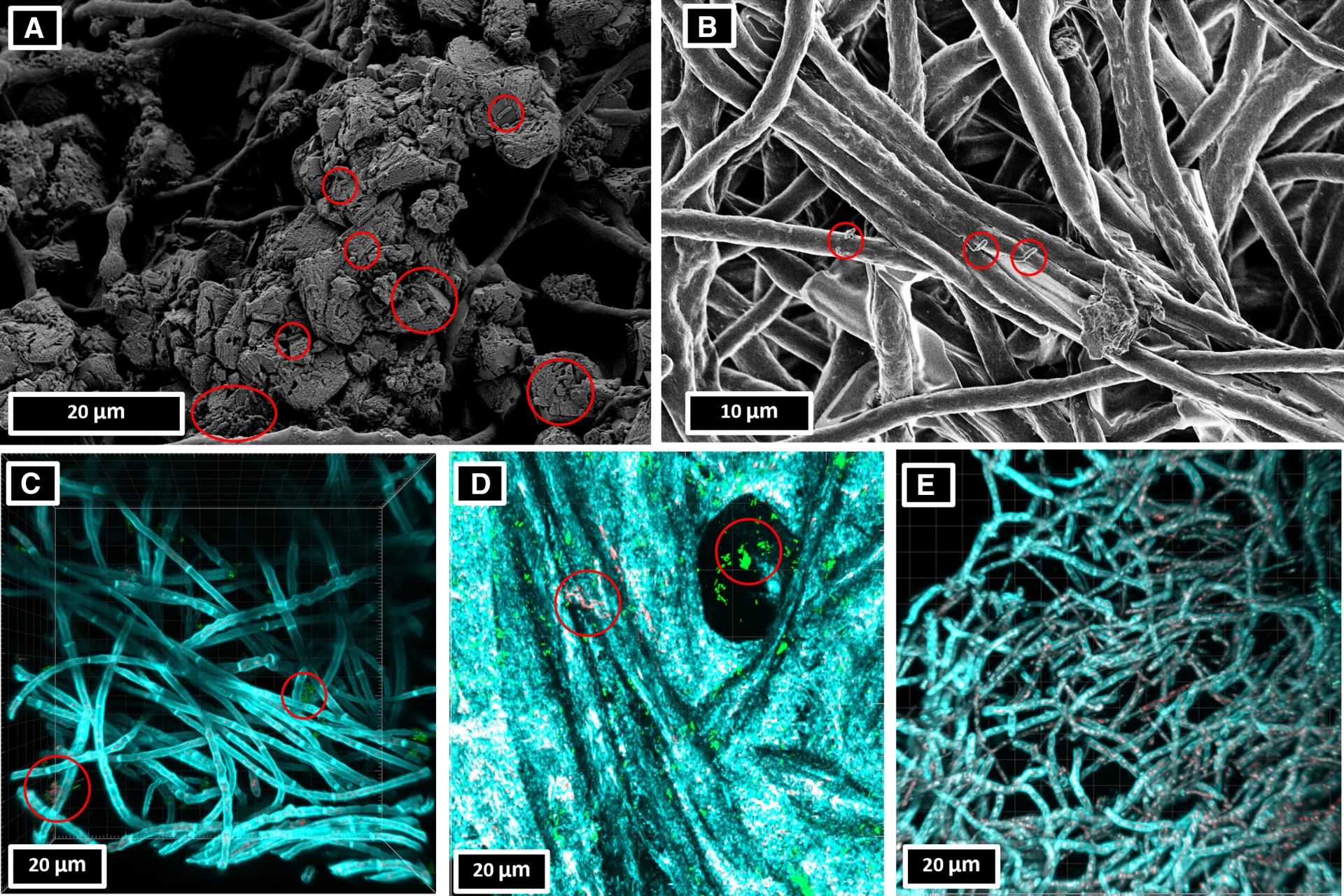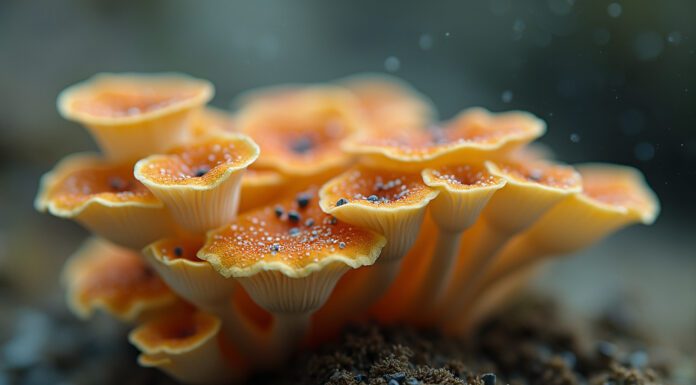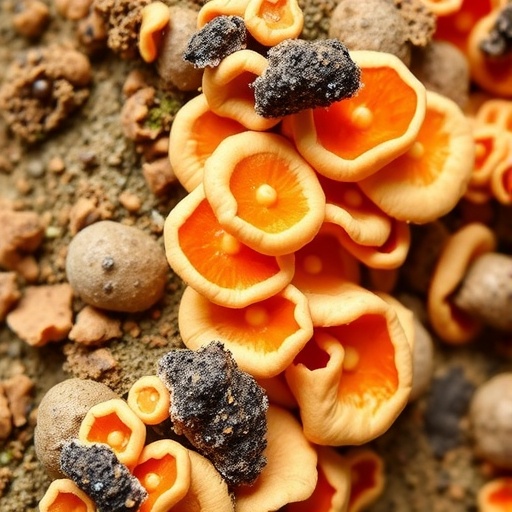The construction sector, a cornerstone of modern infrastructure, grapples with its outsized environmental footprint. Cement alone accounts for 8% of global CO2 emissions, driving urgent calls for sustainable alternatives (Source: New Atlas [2]). Enter bioengineered fungi: innovative materials harnessing mycelium—the fungal root network—combined with bacteria to create living composites that self-heal and biodegrade. Recent breakthroughs, like Montana State University’s fungus-bacteria hybrid lasting over a month, signal potential disruption (Source: ScienceDaily [3]). However, as expert analyses reveal, challenges in strength, scalability, and life-cycle impacts temper the excitement. This overview synthesizes factual data and perspectives to assess if these biomaterials represent genuine progress or greenwashing in a growth-obsessed industry.
The Science Behind Fungal Innovations
Bioengineered fungi leverage mycelium’s natural binding properties, often paired with bacteria for enhanced functionality. A 2025 study in Cell Reports Physical Science details a living material using Neurospora crassa fungi and bacteria that induce calcium carbonate precipitation, enabling self-healing cracks for at least a month—a leap from prior biomaterials lasting days (Sources: Bioengineer.org [1], ScienceDaily [3]). Fungi like Aspergillus nidulans promote biomineralization, autonomously repairing concrete and extending infrastructure life (Source: PMC [4]).
Mycelium composites, emission-free and nontoxic, boast mechanical strength suitable for insulation, with thermal stability from species like Pleurotus ostreatus (Source: PMC [6]). Yet, as analyses note, these materials don’t yet match concrete’s load-bearing capacity, requiring optimizations in internal geometry for broader use [G2].

Environmental Promises and Hidden Costs
Proponents highlight fungi’s low-carbon edge: grown on waste, they avoid cement’s energy-intensive kilns, potentially cutting emissions by 80-90% per life-cycle analyses [G4][G6]. They’re biodegradable, sequestering carbon during growth and aligning with circular economies (Source: PMC [6]).
However, critiques expose pitfalls. Intensive cultivation demands resources like water and sterile labs, risking biodiversity loss from fungal monocultures [G5][G8]. A 2023 review warns of methane from improper decomposition, urging comprehensive LCAs to unmask greenwashing [G10]. From a degrowth lens, fungi excel in regenerative minimalism—repairing existing structures rather than fueling overbuilding—but could inadvertently boost consumption if costs drop without policy caps.
Scalability, Economics, and Health Considerations
Scaling remains a hurdle: current production is niche, reliant on vast waste supplies and bio-refineries [G3][G9]. Economically, mycelium costs $5-10 per square foot versus concrete’s $1-2, limiting it to eco-niches, though automation could enable viability by 2030 [G8].
Health risks include allergens from spores, potentially worsening indoor air quality if growth isn’t controlled [G11][G12]. Mitigations like dehydration render them safe, comparable to wood, but new regulations are needed for biological variables absent in traditional materials.
Public sentiment on social media mirrors this duality: excitement for waste-upcycling dominates, with posts lauding biodegradability, yet skepticism questions hype without real-world proofs (Note: Based on social media posts).
Comparisons to Alternatives and Degrowth Perspectives
Compared to low-tech options like rammed earth or hempcrete, mycelium offers self-healing advantages but lags in cost and simplicity [G13][G14]. Hybrids, such as mycelium-rammed earth, could merge benefits for localized, low-impact building.
Degrowth experts argue fungi support minimalistic architecture—adaptive, ecosystem-harmonious designs—countering endless growth. Without open-source bioengineering, corporate monopolies might undermine equity, turning innovation into inequality.
Constructive Solutions and Future Pathways
Active solutions include EU-funded projects scaling fungi on waste for textiles and construction, demonstrating viability [G9]. Montana’s self-healing prototypes, viable for a month, pave ways for pilot buildings (Sources: [1], [5]). Researchers advocate hybrid reinforcements to boost strength, alongside standardized LCAs for transparency.
Promisingly, startups like Ecovative expand from packaging to architecture, fostering demonstration projects. Policies like carbon taxes could incentivize adoption, integrating fungi into degrowth strategies that prioritize repairs over expansion.
KEY FIGURES
- Cement production accounts for 8% of global CO2 emissions worldwide, making it a major target for carbon footprint reduction in construction (Source: New Atlas) [2].
- Bioengineered fungus-bacteria materials developed by Montana State University remain viable and functional for at least one month, a significant increase over previous biomaterials lasting only days or weeks (Source: Cell Reports Physical Science, Montana State University) [1][3][5].
- Fungi such as Aspergillus nidulans can promote calcium carbonate precipitation, enabling self-healing of concrete cracks by biomineralization (Source: PMC article on self-healing concrete) [4].
- Mycelium-based composites are emission-free, nontoxic, low cost, recyclable, and show promising mechanical and thermal properties potentially suitable for construction (Source: PMC review on mycelium composites) [6].
RECENT NEWS
- April 2025: Montana State University researchers published in Cell Reports Physical Science the creation of a living building material using fungal mycelium and bacteria that can self-heal and last over a month (Source: Science Daily, Bioengineer.org, Professional Engineering) [1][3][5].
- Early 2025: News outlets highlighted the potential of fungus-bacteria hybrid materials as sustainable alternatives to concrete, emphasizing challenges in strength and scalability but recognizing significant advances in self-repair and longevity (Source: New Atlas, Science Daily) [2][3].
STUDIES AND REPORTS
- Study (2025): The fungal-bacteria biomaterial shows promise but currently does not match concrete’s full strength; ongoing research aims to enhance mechanical properties while leveraging self-healing and environmental remediation functions (Source: Cell Reports Physical Science) [1][3][5].
- Review (2022): Mycelium-based composites made from Basidiomycota fungi (e.g., Pleurotus ostreatus) exhibit excellent thermal stability, hydrophobicity, and mechanical strength suitable for insulation and furniture, indicating potential as eco-friendly construction materials (Source: PMC review) [6].
- Research (2019): Fungi can stimulate calcium carbonate precipitation to autonomously heal concrete cracks, reducing maintenance costs and extending infrastructure lifespan (Source: PMC article on self-healing concrete) [4].
TECHNOLOGICAL DEVELOPMENTS
- Engineered Living Material (ELM): Hybrid biomineralized materials combining Neurospora crassa fungi and bacteria capable of microbially induced carbonate precipitation (MICP), enabling transformation of sand/soil into cement-like structures with living cells embedded (Source: New Atlas, Science Daily) [2][3].
- Self-healing fungal composites: Materials that maintain viability of fungal and bacterial cells at low manufacturing temperatures, allowing ongoing repair and environmental remediation functions (Source: Montana State University research) [1][5].
- Advances in biomineralization control: Efforts to improve internal geometry of fungal-bacteria composites to enhance strength and durability for broader construction use (Source: New Atlas) [2].
MAIN SOURCES
- https://bioengineer.org/self-healing-fungus-based-building-material-lasts-over-a-month/ – Detailed report on living fungal-bacterial biomaterial with self-healing properties and longevity.
- https://newatlas.com/materials/fungus-material-sustainable-concrete-alternative/ – Overview of fungus-based sustainable building materials and their potential to replace cement.
- https://www.sciencedaily.com/releases/2025/04/250416135352.htm – Summary of Montana State University’s fungal biomaterial research published in 2025.
- https://pmc.ncbi.nlm.nih.gov/articles/PMC6375922/ – Scientific study on fungi promoting calcium carbonate precipitation for self-healing concrete.
- https://www.imeche.org/news/news-article/self-repairing-fungal-material-could-offer-sustainable-alternative-to-concrete – Engineering news article on fungal self-repairing material as a sustainable alternative to cement.
- https://pmc.ncbi.nlm.nih.gov/articles/PMC8934219/ – Review article on mycelium-based composites and their properties for sustainable construction.
—
Synthesis and Critical Context:
Bioengineered fungi, particularly when combined with bacteria, show promising potential to partially displace cement by creating living materials that are biodegradable, self-healing, and have a significantly lower carbon footprint. The key innovation is the integration of fungal mycelium with bacterial cells capable of inducing calcium carbonate precipitation, allowing the material to harden like cement and repair itself over extended periods (at least a month), unlike earlier biomaterials that degrade quickly [1][2][3].
However, the current mechanical strength of these biomaterials does not yet match that of traditional concrete, limiting their use to particular applications rather than wholesale replacement. Researchers continue to optimize the internal biomineral structure to improve durability and load-bearing capacity [1][2].
From a life-cycle and environmental perspective, these materials have low emissions, are recyclable, and biodegradable, but concerns remain about potential hidden costs such as energy or resources needed for lab-scale cultivation, scalability challenges, and risks of monoculture or allergen exposure in large-scale production. Explicit life-cycle analyses are still emerging to clarify these trade-offs [6].
Economically, widespread adoption faces barriers including current cost competitiveness, infrastructure for mass production, and industry acceptance. The technology aligns well with regenerative and minimalistic architecture ideals rather than fueling unchecked building booms, provided it is integrated thoughtfully with broader degrowth strategies.
Public discourse on platforms like social media reflects both excitement about fungi-based materials’ sustainability and skepticism about hype versus practical implementation, highlighting the need for transparent, evidence-based communication and demonstration projects.
In summary, bioengineered fungi are not yet ready to overthrow cement’s carbon dominance but represent a credible, scientifically backed emerging technology that, with further development and scaling, could significantly reduce the environmental impact of construction materials. They are more than greenwashing gimmicks but still require rigorous validation and systemic integration to make a transformative impact [1][2][3][4][5][6].
Propaganda Risk Analysis
Score: 5/10 (Confidence: medium)
Key Findings
Corporate Interests Identified
Web sources indicate companies in the cement and agribusiness sectors are exploring fungi for low-carbon alternatives, potentially benefiting from carbon credits and green incentives. For instance, cement manufacturers are pushing for ‘green’ cement amid global competition, while fungal biotechnology is positioned to support bio-based economies in construction and materials. No specific companies are named in the article, but broader industry reports suggest firms like those in fossil fuels or biotech could gain from portraying fungi as a climate solution to offset emissions.
Missing Perspectives
The article’s title acknowledges greenwashing risks, but based on web and news results, critical voices like those warning about ‘genetically mutilated greenwash’ in agribusiness or the limitations of fungi in large-scale applications (e.g., soil disruption impacts) may be underrepresented. Indigenous perspectives on land use and deforestation related to bioengineered solutions are notably absent in promotional discussions.
Claims Requiring Verification
Claims in related sources include fungi storing up to 36% of annual global fossil fuel emissions (e.g., from a 2023 study cited in multiple posts and articles), but these are based on estimates and may not account for real-world scalability or long-term efficacy. Dubious statistics also appear in posts about ‘self-charging cement’ using bacteria, which could overstate environmental benefits without peer-reviewed validation.
Social Media Analysis
Social media posts show a mix of enthusiasm for fungi’s carbon sequestration potential (e.g., transferring gigatonnes of CO2 annually) and skepticism about greenwashing in ‘eco-friendly’ materials. Promotional content from eco-accounts dominates, with recent discussions (September 2025) on fungi-enhanced farming and living concrete, but some users criticize it as fraudulent or tied to deforestation. Overall sentiment is positive but inconclusive, with no strong evidence of bot-driven coordination.
Warning Signs
- Overhyping of bioengineered fungi as a ‘revolutionary’ cement alternative without addressing scalability, cost, or potential ecological downsides like genetic modification risks.
- Potential greenwashing in portraying industry-backed ‘green’ cement as a climate fix, while ignoring reliance on polluting byproducts like fly ash from coal.
- Lack of balanced discussion on trade-offs, such as increased land use or biodiversity impacts from fungi cultivation.
Reader Guidance
Other references :
bioengineer.org – Self-Healing Fungus-Based Building Material Lasts Over a Month
newatlas.com – Fungus-based material could offer a sustainable concrete alternative
sciencedaily.com – Living fungus-based building material repairs itself for over a month
pmc.ncbi.nlm.nih.gov – Screening of Fungi for Potential Application of Self-Healing Concrete
imeche.org – Self-repairing fungal material ‘could offer sustainable alternative to …
pmc.ncbi.nlm.nih.gov – Mycelium-Based Composite: The Future Sustainable Biomaterial
eurekalert.org – Living fungus-based building material repairs itself for over a month
sciencedirect.com – Source
sciencedaily.com – Source
fungalbiolbiotech.biomedcentral.com – Source
researchgate.net – Source
sciencedirect.com – Source
pmc.ncbi.nlm.nih.gov – Source
en.wikipedia.org – Source
mdpi.com – Source
techxplore.com – Source
mdpi.com – Source
smithsonianmag.com – Source
cnn.com – Source
materialdistrict.com – Source
x.com – Source
x.com – Source
x.com – Source
x.com – Source
x.com – Source
x.com – Source




